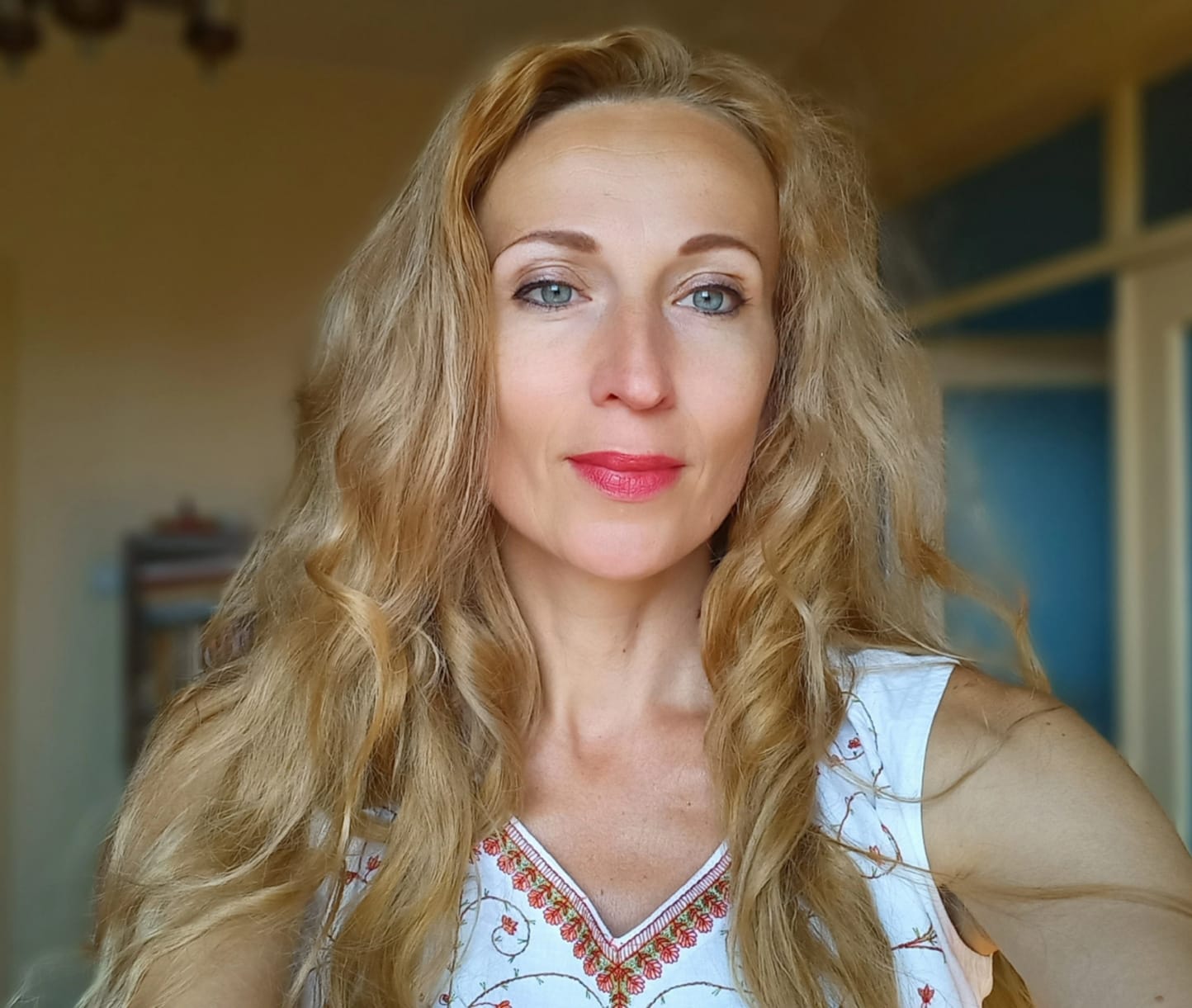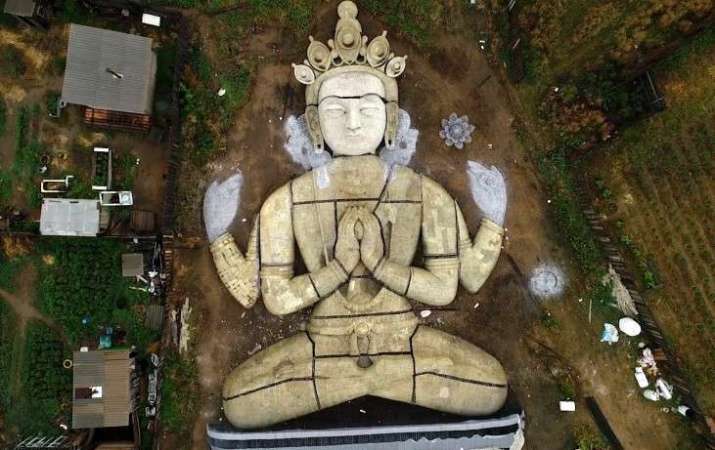
The village of Sanaga, in the southwestern Zakamensky District of the Russian Republic of Buryatia, has a long Buddhist history. It was dubbed “Divaazhin” (Tib: Dewachen, Pure Land of Amitabha Buddha) by the first Pandito Khambo Lama Damba Darzha Zaiaev (1710–76).
The first datsan (monastery) was built in the Nomtogol area of Sanaga in 1786. In 1834, Sanaginsky Datsan was established andbecame one of the largest in Buryatia, consisting of seven temples, and was one of the few datsans where the Tsam mysteries (Tibetan Cham ritual dance) were conducted. Sanaginsky Datsan was destroyed in 1935, five years after the East Siberian Regional Committee of All–Union Communist Party (Bolsheviks) adopted a resolution to liquidate all religious faiths in Siberia, including Buddhism, Christianity, and shamanism. The Buryat temple was rebuilt at the end of the 20th century by Rinchin Dulmaevich Zunduev, who became its first shirete (abbot). The new temple Sanaginsky Datsan “Dasha Puntsoglin”was consecrated on 18 August 1991. Since 1993, the shirete lama has been Bair Bimbaevich Tsydenov (Jampa Monlam).
Over the last five years, Sanaga has become well known among Russian Buddhists for the ongoing construction of a huge statue of the Bodhisattva of compassion Avalokiteshvara, known in Buryatia as Arya Baala.* Standing 41 meters high and 28 meters wide, the sacred figure will be the largest Buddhist image in the Russian Federation.
Avalokiteshvara is worshipped as one of the main Buddhist deities in the region. As an earthly manifestation of the self-born eternal Amitabha Buddha, he is the perfectly chosen for the Pure Land of Sanaga.
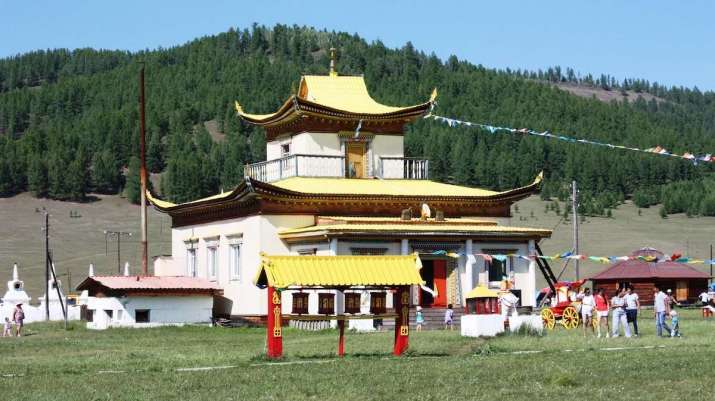
The project was initiated in 2015 by the 24th Pandito Khambo Lama Damba Badmayevich Ayusheev, the incumbent Buddhist leader for the Russian Federation. Construction began in 2017, led by the Buryat sculptor and honored Russian artist Yuri Mandaganov. Mandaganov and his team of two students and eight welders have being creating the statue in the village of Nurselenie, Ivolginsky District.
Work on the statue is almost complete and very soon it will be transported to Sanaga and installed on a mountainside near Sanaginsky Datsan. Joining together all 35 parts of the statue on the slope will be the most challenging aspect of the project in terms of physical labor. The local authorities are expected to help with the labor and the final work on the monument. The mountainside is not easily accessible by car, although there are already plans to construct a road. As such, the actual process of installing the sculpture is still under review.
To enable transportation between Zakamensky and Ivolginsky, a distance of some 500 kilometers, the structure of the statue is hollow and has been designed to withstand weather conditions in the area—Mandaganov has employed a rebar frame and an anti-corrosion coating. The base of the sculpture will include 30 tonnes of rebar and will be covered with a three-layer synthetic fiberglass cloth saturated with tar.
Work on the Avalokiteshvara statue has been performed without the benefit of modern 3D modeling technologies, which usually simplify the calculations involved. Thanks to his long experience, the eminent sculptor Mandaganov was able to create the image using traditional means.
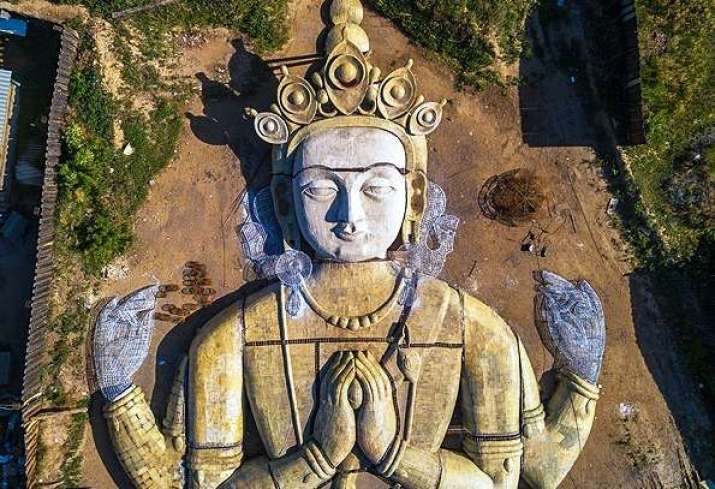
His goal, however, was not to create the largest Buddhist image in Russia, but simply to to design a statue that fits harmoniously into the natural landscape of the area. In an interview with Baikal Media Consulting, Mandaganov explained the practical reasons for the impressive size of the image: “We are not engaged in ‘gigantomania.’ It’s just the fact that on the slope of the mountain that we chose for the sculpture, there is a 150 x 20-meter meadow without vegetation. It was also necessary to take into consideration how pilgrims would move around it.” (Байкал Медиа Консалтинг)
The sincere hope of the initiators and the creators of the Avalokiteshvara sculpture is that the site will become one of the most popular destinations in Buryatia, not only for Buddhist pilgrims but also for tourists who visit the East Siberian republic. Sanaga is expecting to become a real Pure Land and inspire faith and devotion in the Buddhadharma. Thus, the glorious Buddhist past of the village, when there were 700 lamas at Sanaginsky Datsan, will be restored and hopefully a revival of Buddhism will begin in the region.
Avalokiteshvara remains in samsara as an expression of infinite compassion in order to answer the cries of suffering and help sentient beings attain liberation. Any appearance of the merciful bodhisattva gives a hope and spreads the eternal light of the Dharma. It is the accumulated positive karma of the people of Sanaga and the auspicious connection (tendrel zangpo) between the initiators, creators, and supporters of the project that allow such a sacred image to manifest.
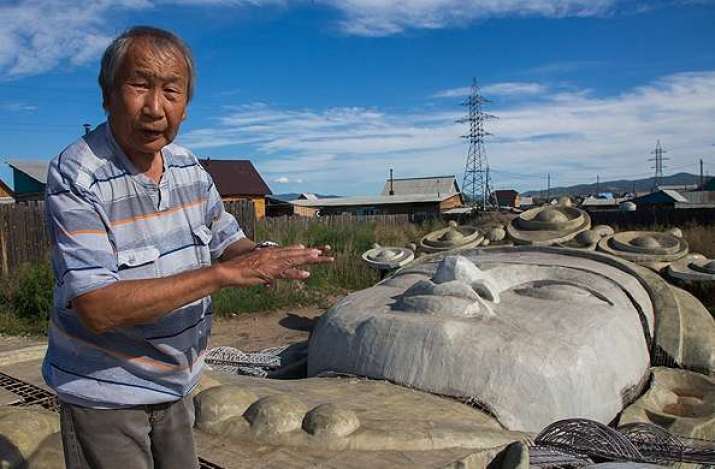
*Construction of Avalokiteshvara Statue Underway in Buryatia (Buddhistdoor Global)
See more
Новую огромную святыню в Бурятии сняли с воздуха (Baikal Daily)
История самого большого Будды Бурятии (Baikal Media Consulting)
Санагинский дацан “Даша Пунцоглин” (Sangha Russia)


